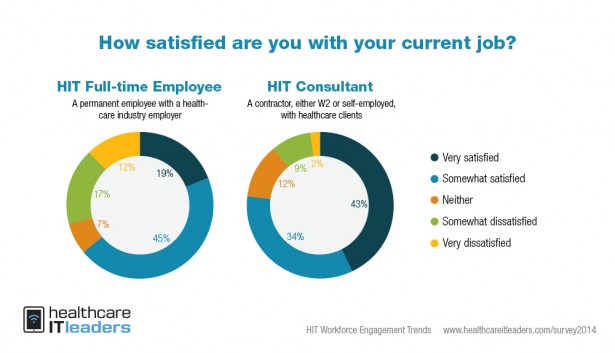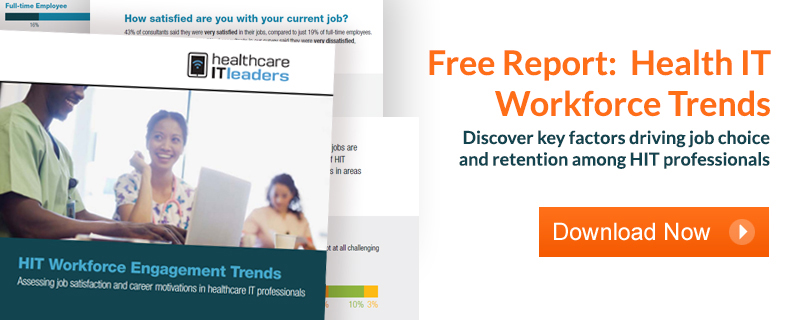Healthcare IT Consultants Are… Happy!
“I’m a hot-air balloon that could go to space,” sings Pharrell Williams in his mega-hit, “Happy.”
That’s a feeling shared by many healthcare IT consultants these days who are riding sky-high on a surplus of challenging projects and ever-increasing pay rates.
In our first-ever survey measuring engagement and job-seeking trends among HIT professionals, consultant satisfaction, as measured across multiple criteria, was generally off the charts and ranked much higher than the satisfaction rates of HIT full-time employees (FTEs) and the global workforce as a whole.
“Most healthcare IT consultants in today’s job market have plenty of reasons to smile,” said Brad Elster, President of Healthcare IT Leaders. “They are well-paid, they are in high-demand and the work they do is challenging and satisfying. What’s not to be happy about?”
In our survey, 77% of HIT consultants report some level of job satisfaction, with 43% saying they are “very satisfied.” In contrast, just 64% of HIT employees report satisfaction with their roles and only 19% say they are “very satisfied.”
HIT consultant satisfaction also measures favorably against the global workforce. A recent LinkedIn survey of fully employed workers in 26 countries found that 27% were “very satisfied.”
Consultants, more than FTEs, reported that their jobs were challenging and meaningful, which correlated to their overall satisfaction. Pay differentials between consultants and FTEs were also evident in the survey. Forty percent of consultants said they were “very satisfied” with their current pay, while only 18% of FTEs said the same.
The report also assessed job-seeking trends in the HIT workforce and found similarities between consultants and FTEs. Both groups frequently engage in proactive career management activities, such as the maintenance of a resume or online professional profile and networking.
Open to change
Healthcare IT workers in both categories told us they were open to job switching. Only 10% of respondents were completely satisfied with their job and would not consider a new job at this time, meaning most keep an eye on the job market passively or are actively seeking new employment.
“The HIT job market has been super-heated for a few years now and even fully-employed professionals are actively managing their careers and are more open to new opportunities,” explained Elster.
Click below for complete survey results and to get a free copy of the report, HIT Workforce Engagement Trends.

